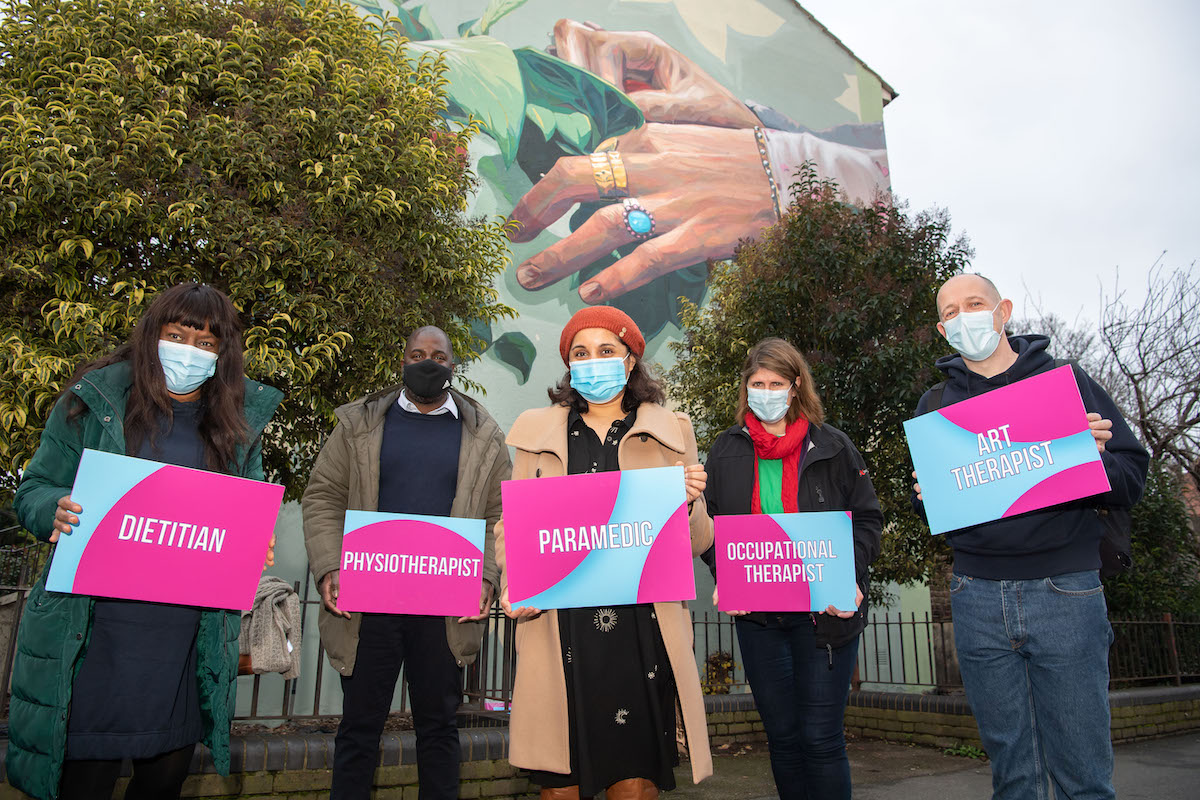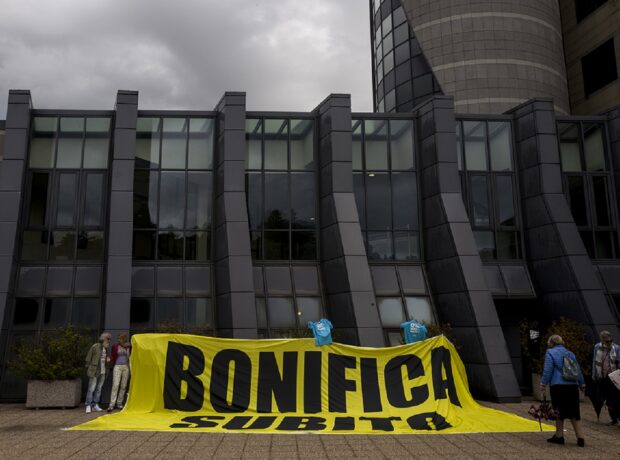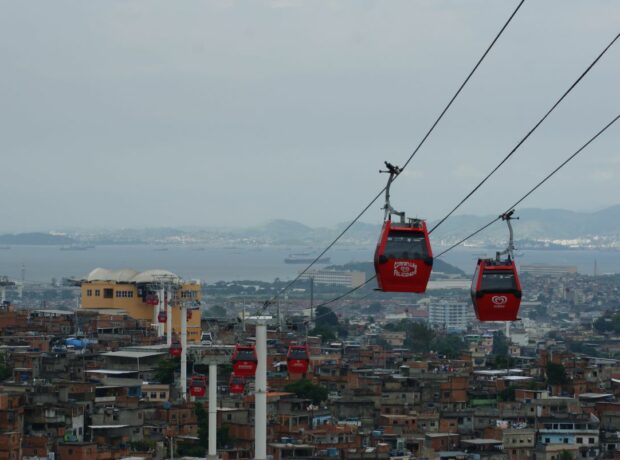This hidden workforce in the NHS has one of the lowest percentages of ethnic minority workers. Journalist Mina Hadi visits an east London school and examines a local gardening project to learn about Allied Health Professionals, asking what can be done to address their diversity problem?
When it comes to unsung heroes of the NHS, the professions that normally come to mind are nurses and doctors. But frequently forgotten are Allied Health Professionals, or AHPs. They make up the third largest workforce in the NHS and consist of 14 professions, including: arts, music, dance and drama therapists; physiotherapists; podiatrists; occupational therapists and dietitians.
These health professionals do vital work in areas of great need, offering a holistic, flexible and community-based lifeline instead of (or alongside) diagnosis-driven care.
They are diverse by nature of the varied professions involved, but in terms of racial and ethnic diversity, they are lacking.
In 2020, 12.2% of AHPs identified as an ethnic minority – lower than the national population average of 13.9% and significantly below the NHS workforce average of 19.9%.
Within the 14 Allied Health Professions, the lack of diversity is even starker. Figures from 2019 show only 9% of occupational therapists and 10% of physiotherapists identified as ethnic minorities. Within arts, music and drama therapy, BAME representation fell to just 6%, and in paramedics, it was only 3%.
According to the British Association for Music Therapy’s diversity report, a mere 1.5% identified as Black. Notably in this survey, no Bangladeshi, Gypsy/Traveller or Arab music therapists were recorded.
The disparity is sharply felt when considering more ethnically diverse regions such as London, where just over 40% of the city identify as an ethnic minority. This workforce of Allied Health Professionals – so diverse and holistic in nature – does not come close to mirroring the community it serves.
By Suzanne Rastrick’s own admission, as Chief Allied Health Professional Officer, the work done to increase ethnic minority representation has been “frankly insufficient”. Two years ago, Rastrick noted the inequalities faced by ethnic minority staff in the NHS and has committed to addressing them.
In London, efforts are underway to rectify these shortcomings. One such project is an ambassador programme, run by a collaboration of organisations working together as North East London AHP Council. Alongside their colleagues, AHPs from ethnic minority backgrounds have been going into schools and colleges to inform students about the benefits of working for the NHS. Johnson Aju is one of the programme’s ambassadors. He recently shared his experiences and career trajectory with students at Jo Richardson Community School, an east London secondary school named after the late Labour MP.
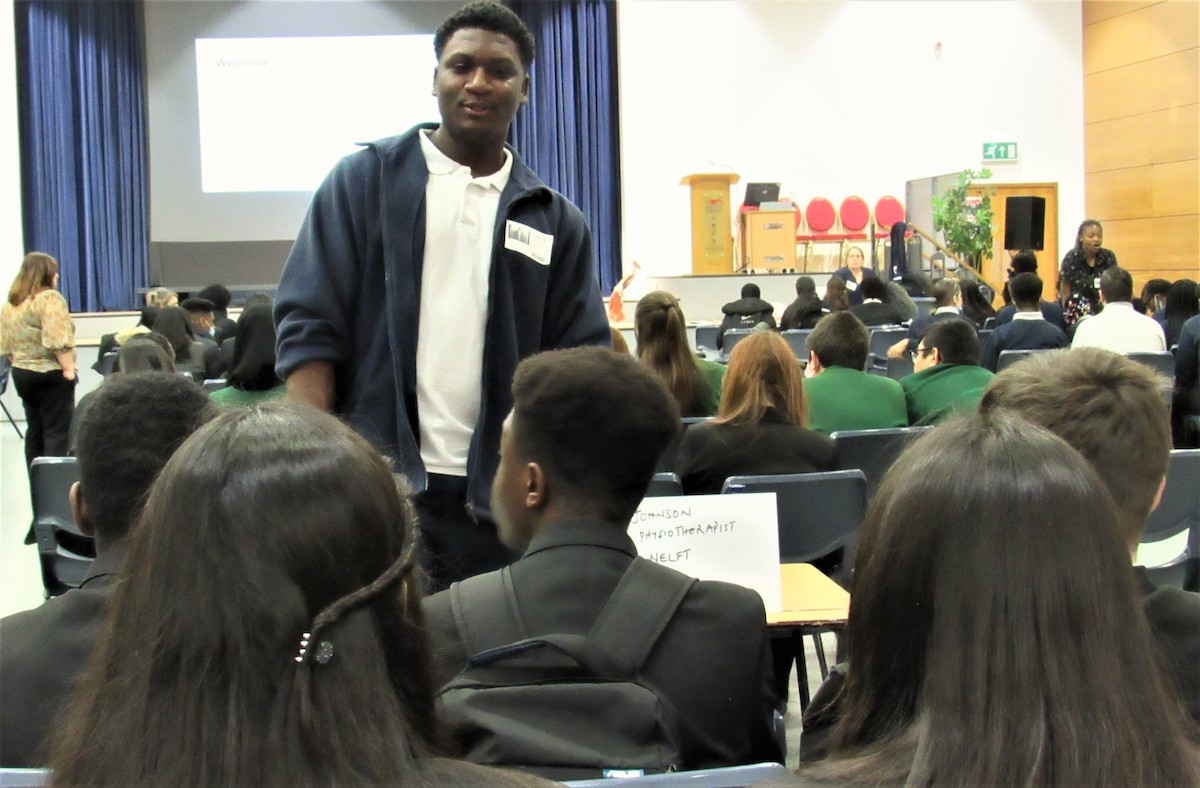
Johnson Aju – physiotherapist ambassador
Johnson is a Black physiotherapist working for the North East London NHS Foundation Trust. When asked about the need for diversity in the NHS, he says: “It’s very important. That’s one of the reasons I’m doing this, because I feel like there’s not enough Black male physiotherapists. There’s been an increased number recently, but there’s not enough.”
These sentiments are echoed by students at Jo Richardson School, like Maggie, aged 13, who says:
“For young people who are looking to go into the healthcare profession, it’s important to be able to see someone who looks like you and have that inspiration to be like, ‘I can do that – if they’ve done it, then why can’t I?’”
Inspiring the next generation of AHPs has to involve encouraging racial diversity, but the starting point is raising awareness that this workforce even exists.
Many of the school students say they hadn’t heard of arts, drama or music therapists before. But even if it doesn’t fit their more traditional view of the NHS workforce, they like the idea of combining art and therapy, both as a profession and a treatment option.
“AHPs represent often a hidden workforce in the NHS, given the emphasis there is often on doctors and nurses,” says Stephen Sandford, professional lead for AHPs in the East London NHS Foundation Trust.
“Now is the time to talk about AHPs. What we’ve learned from Covid is that it’s an illness that impacts people in a whole range of holistic ways which aren’t simply linked to a traditional model of ‘see a doctor, see a nurse and get better’.
“There are so many residual factors that lead to complex health outcomes, which are so worthy of the opportunity to raise the profile of AHPs and their contribution to care.
“And we know what it means to have potentially long-term symptoms or suffer from a condition associated with Covid. So I think generally the population has woken up to the options of physiotherapy, occupational therapy, podiatry, speech therapy, dietetics and arts therapies.
“Our health is multifactorial and it’s a holistic thing that can be held by many, many professional groups. And I think if you continue the story of COVID and its impact, it leads you very quickly to the impact it’s had on BAME communities and health inequalities, prompted not by inclusion but exclusion.”
The numbers bear this out, both in terms of Covid’s impact on BAME staff in the NHS and on ethnic minority communities more widely. And since Covid-related morbidities and hospitalisations have been disproportionately impacting communities of colour, other healthcare inequalities in mental health settings have been thrown into sharp relief. This includes a general lack of accessibility for BAME service users, and the disproportionate use of seclusion, restraint and sectioning on BAME patients.
Stephen says: “If we are going to help our communities feel well, get well or stay well, then it’s really important that they have access to a wide range of health and care input – and that’s where AHP professions are key.”
But even in more holistic professions such as physiotherapy, the traditional approach is not always suitable for ethnic minorities who face other barriers accessing services.
“Traditionally, healthcare was delivered with clinical guidance based on research delivered and undertaken often with white people,” Stephen says.
“This guidance doesn’t correlate with what it means to be in the more diverse areas of London, such as Newham, where I work. Newham residents face daily inequalities in housing, income and race that impact their health. As such, new views on research approaches are needed that capture diverse cultural issues impacting communities of colour.”
Further exacerbating these inequalities are stereotypes based on institutional and often unconscious bias, leading to specific racial groups having poorer health outcomes. One example is “Mrs Bibi Syndrome”, so-called when referring to Pakistani and Bengali women who are often perceived to be exaggerating their symptoms.
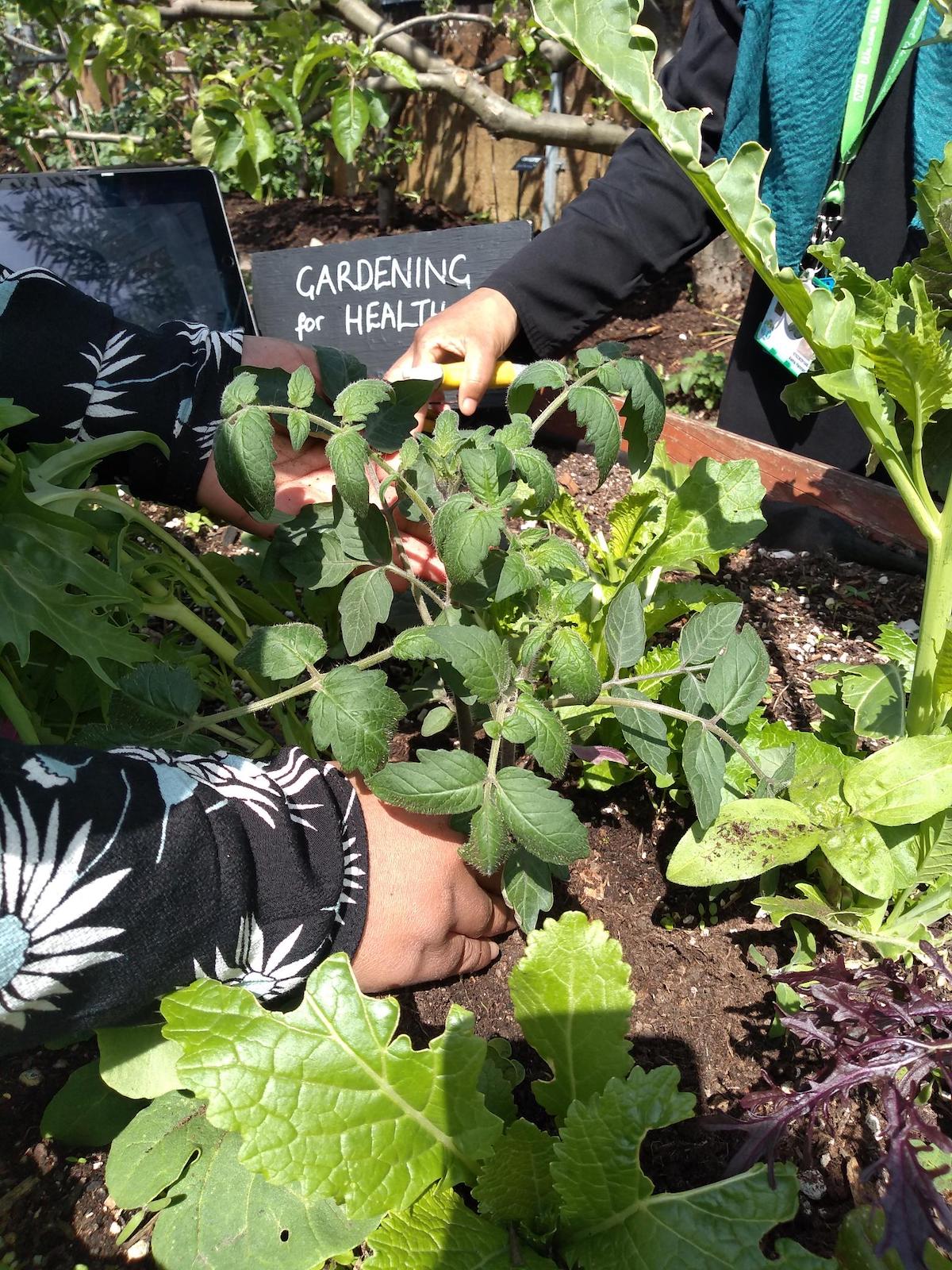 In an attempt to address these inequalities, Dr Sharen Hayre, a clinical psychologist in Tower Hamlets, set up the Gardening for Health group. This came in response to concerns raised by a physiotherapist Sharen worked with, who noted a certain pattern in the patients he was seeing – Bengali women of relatively young age, with chronic pain and reduced mobility. Sharen found they were not engaging in the usual treatment of physical home rehab exercises.
In an attempt to address these inequalities, Dr Sharen Hayre, a clinical psychologist in Tower Hamlets, set up the Gardening for Health group. This came in response to concerns raised by a physiotherapist Sharen worked with, who noted a certain pattern in the patients he was seeing – Bengali women of relatively young age, with chronic pain and reduced mobility. Sharen found they were not engaging in the usual treatment of physical home rehab exercises.
They would then reach the end of their treatment, be discharged and then often be re-referred to the same services, for the same reason. And the narrative too remained the same: that these women did not engage.
Labels such as “hard to reach” are often used in health settings to describe such groups, but Sharen advocates for moving away from this term. “It might be that the services needed to change, rather than the women,” she says.
“We decided that we needed to not align with this narrative of the women as the problem, that they cannot engage in services, but more that we are not offering a service which is appropriate for these women.”
Sharen approached this issue by consulting with the women and their partners, asking if they would like to attend a gardening group.
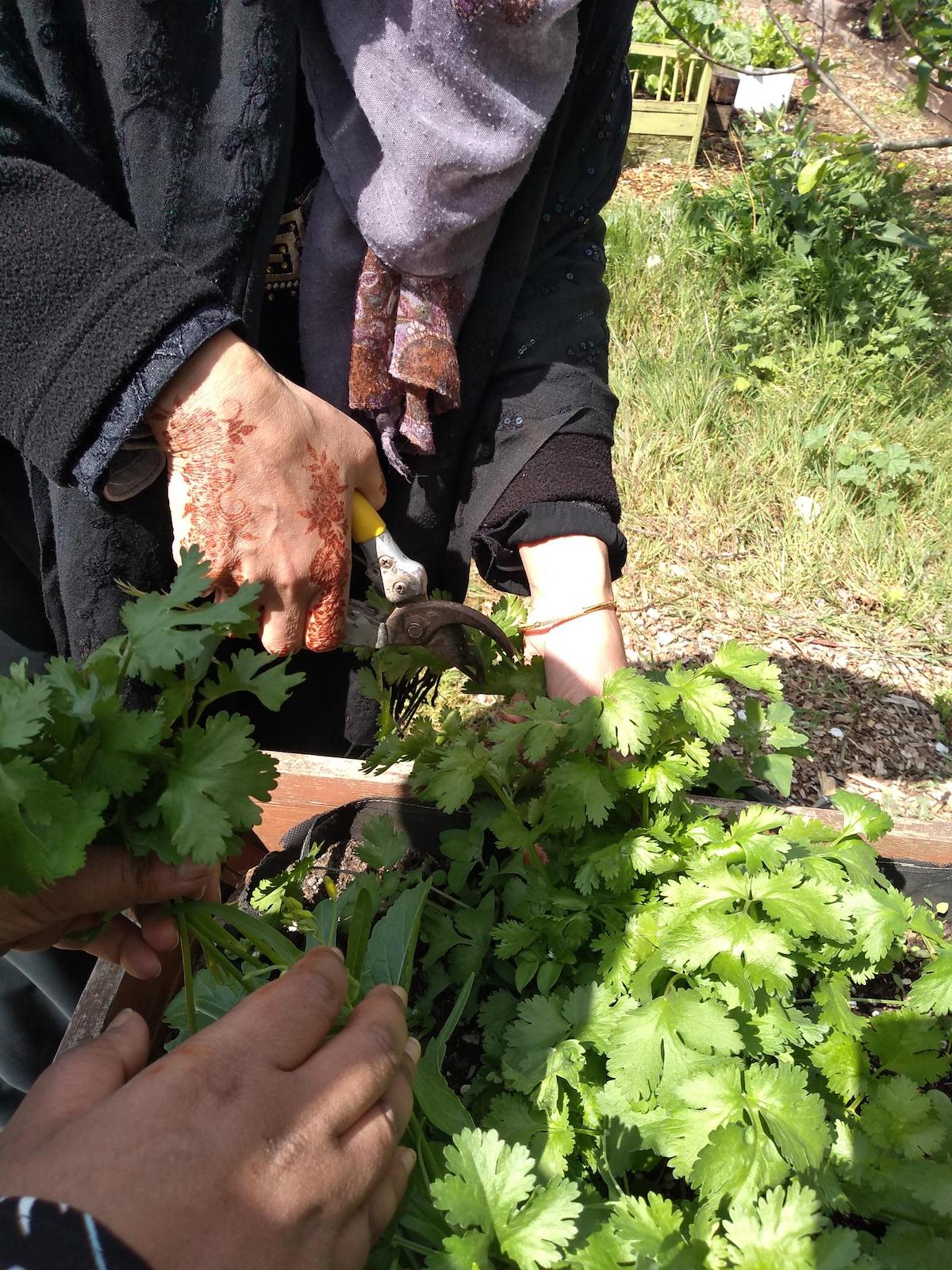
“In gardening, you have to use your body, standing and movement, so we could attend to elements of physiotherapy and activity. It wasn’t just an arbitrary exercise that needed to be done, but rather was incorporated into something that made sense, something that was welcomed and was relevant to the women.
“So we asked, ‘Look, if we were to put together a gardening group which had elements of physiotherapy and activity but which was grounded in connecting with nature and attending to wellbeing more broadly, would you be interested?’ They all seemed up for it.”
The group was piloted in 2019, in Spitalfields City Farm. It was an accessible location and was flexible in timing, without a punitive discharge if someone came late or didn’t attend (the norm in most psychology groups). It was facilitated by Bengali support workers as well as a physiotherapist and occupational therapist.
The women engaged in a way they hadn’t previously. It helped to have an approach to their physical and mental wellbeing that was based on their strengths, rather than being based on a deficit model of what they couldn’t do. By giving the women agency and more control, the project helped redress some of the power imbalances that are inevitable in clinical relationships, but that are even more keenly felt in communities of colour.
“In terms of race, I’ve been profoundly aware that chronic pain has such an unknown [quality] to it,” says Sharen. “Chronic pain presents much more in South Asian communities. It’s located much more profoundly in South Asian women, and I think that alongside this is somatisation, which is a very pathological term traditionally very negatively placed onto South Asian women.
“There’s lots of research which says that South Asian women present with unknown physical health symptoms frequently. Medically unexplained symptoms are physical symptoms and manifestations which are often believed to be rooted in psychological, emotional or mental health.
“Distress [presents itself] very differently in different communities and isn’t always understood from a medical or Western perspective.
“I think it was interesting because when our curiosity began with this group of women, it was a physio colleague who raised this. I offer reflective practice sessions to staff groups. In one reflective practice session, this senior physiotherapist reflected on how he’d seen a few clients and they just all seem to be really similar, with the pain getting in the way of the usual exercises. Upon further reflection we realised that [these clients] were all Bengali women.
“And we could see this from a population health perspective. Was this an emerging pattern? Were there particular needs that we weren’t tuning into, in terms of biases?”
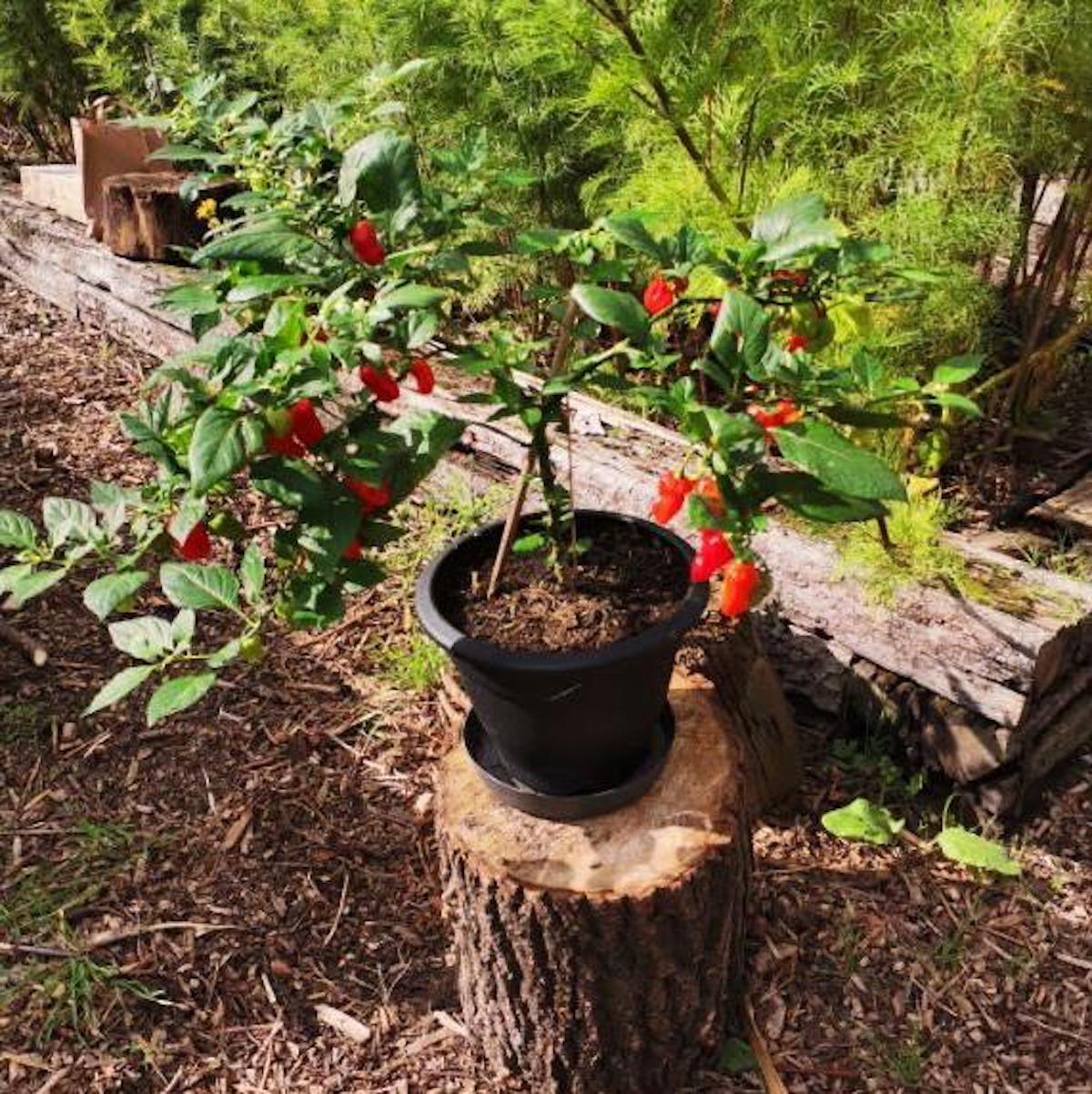
Salima was one of the original attendees of the Gardening for Health group and is now working as a peer support worker for the project. She has chronic knee pain and has had multiple knee surgeries intending to prevent further damage. She speaks about the cultural nuances of being of a Bangladeshi background – including the stigma of being ill and the difficulty in not being able to cook for the household. Salima also stresses the lack of awareness and visibility of several key Allied Health Professions: arts therapies, physiotherapy and occupational therapy.
“I had my fair share of hardship because of not being aware [of these professions],” she explains. “When I had my first major knee surgery, the ward should have signposted me to an occupational therapist or physiotherapist before sending me home. Initially, I wasn’t given an occupational therapist or a physiotherapist at home. And when I did go to physio, all they saw was my pinpointed pain – I’ve had knee surgeries, so I needed to fix that muscle. That was it. But they didn’t understand that it’s a holistic thing. So when I’m in pain or I can’t do something, my whole body is in pain, emotional and physical.
“I didn’t know there were arts therapies,” Salima adds. “I used to do art myself – just scribbling on paper, colouring – I didn’t know that that could be used as therapy. But I used to find comfort doing it myself.”
Through Gardening for Health, Salima and other Bengali women were able to connect with one another, to share stories, strength and solidarity. The success of the project has meant that it now has permanent funding, and the East London NHS Foundation Trust can refer people to it as a treatment option alongside home treatment plans.
Interestingly, neither of the AHPs involved in the project – a physiotherapist and occupational therapist – were ethnic minorities. But being in a reflective space with Sharen, who is of South Asian descent, meant that the AHPs involved – regardless of race – were able to look at their practice in relation to their biases and preconceived assumptions.
“I suppose, here [the physiotherapist] was, talking to me in a group about it, recognising that I might hold a different perspective,” Sharen says, “by virtue of being who I am, which is non-white.”
She adds: “Lack of diversity in allied health professions is a very similar story for psychology as well. And what this means is that the people we see, if they don’t see the same or similar person sitting across from them, it might have a really profound impact in terms of how a problem is understood and where it’s located.”
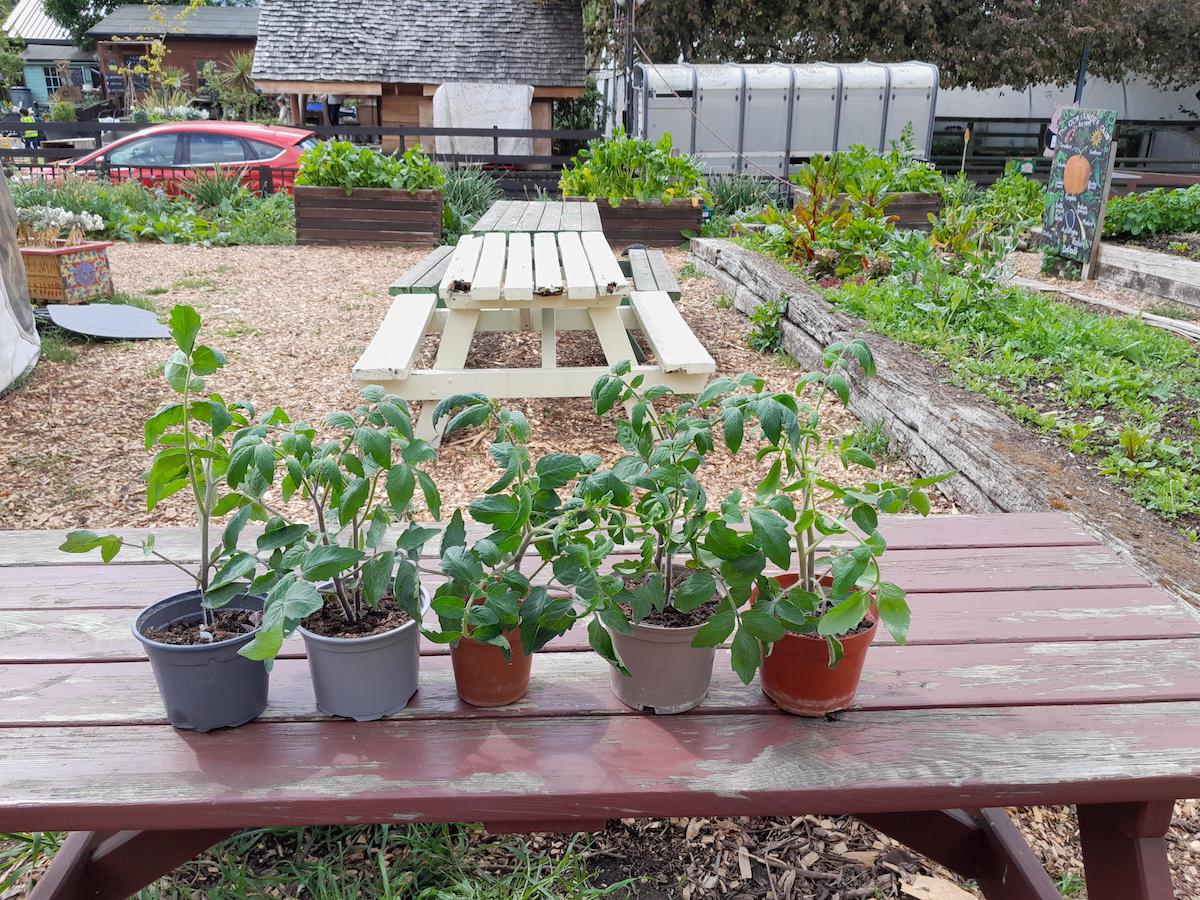 So, diversifying the workforce is not enough on its own. The Gardening for Health project shows that even a newer discipline like physiotherapy is not always accessible. A similar sentiment was expressed by Stephen Sandford, who recalls qualifying as a music therapist 25 years ago.
So, diversifying the workforce is not enough on its own. The Gardening for Health project shows that even a newer discipline like physiotherapy is not always accessible. A similar sentiment was expressed by Stephen Sandford, who recalls qualifying as a music therapist 25 years ago.
“Arts therapies have come from a largely Westernised training model,” Stephen explains. “And that’s exemplified by when I applied [as a music therapist]: you had to play Western classical music as part of your audition process to get on the course. Things have changed significantly since then.
“There’s been a recognition that you don’t necessarily need to be able to play Beethoven or Mozart or classical music in order to train to be a music therapist. And there are many good examples now of musicians that come from a whole range of ethno-musicological backgrounds, bringing vibrant talent that better reflects the needs of the communities we serve.”
The total number of music therapists in the UK who are registered to the British Association of Music Therapists is around 800 – a small fraction of the NHS’s more than one million employees. So, it may be easy to understand why this profession is so often overlooked and under-promoted. But its fledgling size also means there is still scope for this workforce to grow – in numbers, in availability and, above all, in diversity.
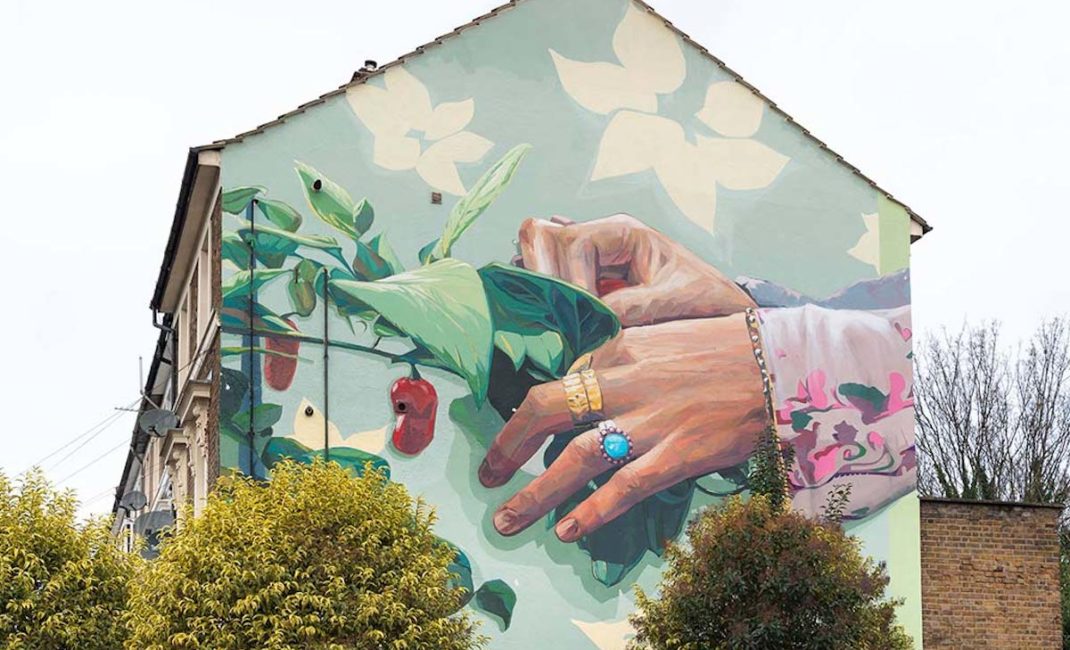
The East London NHS Foundation Trust commissioned a mural in Waltham Forest celebrating the Allied Health Professionals’ Gardening For Health project
As a tribute to AHPs and in celebration of the Gardening for Health Group, the East London NHS Foundation Trust commissioned a mural in Waltham Forest. It pictures the hands of the Bengali women in the Gardening for Health group, tending to a chilli plant and wearing a ring that features the national AHP logo. The aim of the mural, which took artist Gabriel Pitcher three weeks to complete, was to spark conversations about AHPs, widening awareness of careers in these fields.
Pitcher has painted another tribute, working with creative consultancy Wood Street Walls, on the side of a house in Walthamstow, showing frontline workers at the peak of the pandemic. But these public artworks – much like efforts to diversify the NHS – are no more than a starting point in the fight to redress healthcare inequalities.
Gardening for Health is available as a treatment option in Tower Hamlets, but what about Bengali populations elsewhere, like in Birmingham, Luton or Oldham? What about Black communities and other ethnic minorities who also don’t fit the mould of traditional Western, Eurocentric healthcare?
In any conversation about cultural competence, particularly in enabling someone’s recovery, a strengths-based approach is common, but what this looks like in reality varies for different people. For instance, the Bengali women in the Gardening for Health project are overwhelmingly Muslim, including Salima, who spoke about the strength her faith gives her.
“Our faith plays a big role, but I don’t think it has been acknowledged by the NHS. It’s something we speak about as a group, amongst me and my peers. So when we’re comforting one another, when we share our struggles with one another, we do bring our faith in. We say, ‘Allah is here, make dua’, that kind of thing. And it is so important to us. But no, it’s not acknowledged by the NHS. There’s nothing offered in regards to faith to help us spiritually either by the NHS. So there’s no counselling that will bring your faith in. It’s something you’ll need to look into privately.”
Unfortunately, it’s easy for organisations to be performative and purely symbolic in their supposed activism, rather than initiating substantive change. While Bengali signage at Whitechapel Station is a nice touch for an area with such a high Bangladeshi population, it does little to better the lives of local people, especially considering the fact that Tower Hamlets is one of London’s most deprived boroughs, with a poverty rate of 39%.
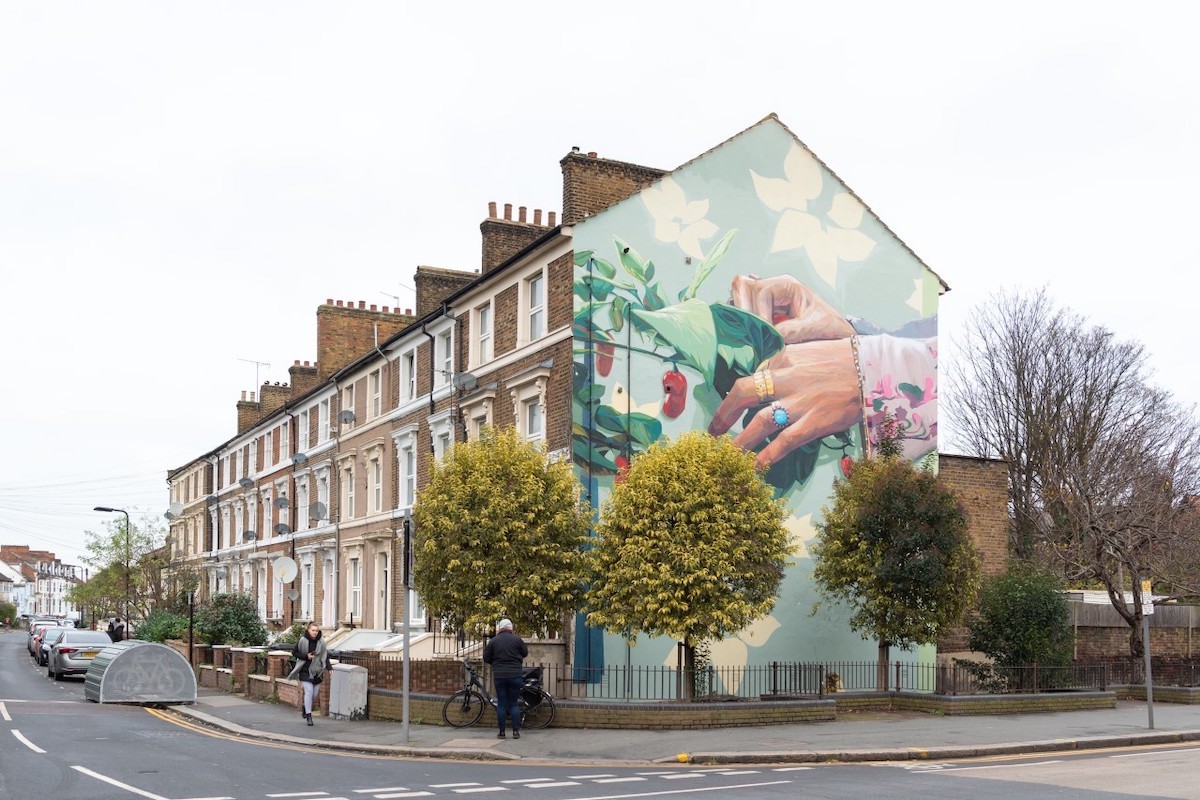
The East London NHS Foundation Trust commissioned a mural celebrating the Allied Health Professionals’ Gardening For Health project in Waltham Forest
This is not to discount the efforts made and the potentially therapeutic nature of the AHP mural, nor the Gardening for Health group it honours. Rather, the reason for these programmes being well-received is the emphasis on lived experience of ethnic minority communities and individuals. According to Stephen:
“AHP leads who are from a BAME background have really been so instrumental in leading the work with a very courageous narrative of ‘If not me, who will do this?’
“And that helps others feel able to add their voice. I think it’s really important to honour and respect everyone’s contribution, given how much it takes to share your story and to potentially be quite vulnerable if you share how stigmatising and how difficult your journey has been. So I’m really grateful to all of them.”
Committing to diversifying NHS staff – AHPs and otherwise – also means acknowledging and valuing the diversity of people’s experience in accessing healthcare, including systemic shortcomings and failures. To become truly anti-racist, accessible and inclusive, healthcare services have a long journey ahead.
Read more:
- The Next Generation: How are young people being affected by the Covid-19 pandemic?
- 13 Covid stories exposing inequalities around the world
- Why is it so hard for young people to find decent mental health care?
Main Image shows Allied Health Professionals – by East London NHS Foundation Trust
